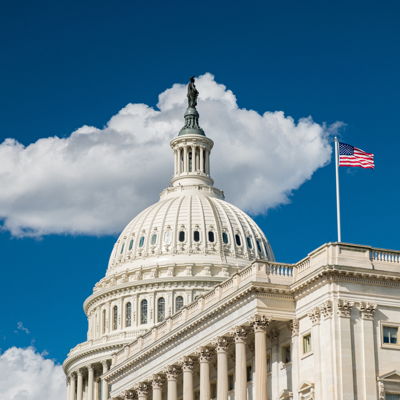The One Big Beautiful Bill Act (OBBB Act) has introduced several changes with important implications for businesses. While many believed that this bill was intended to be an extension of the 2017 Tax Cuts and Jobs Act, the final piece of legislation became much more than that. There are benefits that have been reinstated, revised, and also some new opportunities.
Clocking in at nearly 900 pages, and touching on business verticals from EVs to retail, corporate financial teams—particularly CFOs—are still working to understand how the legislation will affect their organizations and what steps they can take to adjust their financial strategies accordingly.
Below is a snapshot of the key provisions that organizations need to keep in mind as they look to optimize their financial footing under this new legislation.
Permanent Full Expensing for Business Property
One of the most notable developments stemming from the OBBB Act for the corporate community is that it allows for 100% bonus depreciation (full expensing) for qualified business property permanently removing the previous phase-down schedule under IRC §168(k).
Meaning, corporations may now immediately deduct the full cost of qualified property – with a recovery period of 20 years or less – placed in service after January 19, 2025, rather than depreciating it over several years. Transitional options allow for reduced percentages in 2025 for certain property, but the default is 100% expensing.
This accelerates tax deductions, improves cash flow, and incentivizes capital investment in equipment, machinery, and other tangible assets.
Increased Section 179 Expensing Limits
Corporations will also be able to further improve their cash flow and reduce taxable income as a result of increased expensing limits under IRC §179, which now has an annual limit for expensing at $2,500,000, with the phase-out threshold raised to $4,000,000, both indexed for inflation.
These higher limits will allow more corporations to fully expense qualifying property in the year placed in service, rather than depreciating over time – which will likely be beneficial for small and medium-sized businesses in particular.
Full Expensing of Domestic Research and Experimental Expenditures
Aimed at boosting innovation and investment in U.S.-based research activities the OBBB Act also makes key changes in relation to corporate deductions of domestic R&D costs. Under these revised rules, domestic research or experimental expenditures, notwithstanding section 263, are now fully deductible in the year incurred under new IRC §174A, reversing the prior requirement to amortize such costs over five years.
Small business taxpayers – those meeting the average gross receipts test of section 448(c) – will generally be permitted to apply this change retroactively to tax years beginning after December 31, 2021. This will require small business taxpayers to amend prior year returns to claim immediate deductions for domestic R&D expenditures that were previously capitalized.
All taxpayers that capitalized R&D expenditures for years beginning after December 31, 2021, and before January 1, 2025, can elect to accelerate the remaining unamortized deductions for those capitalized expenditures over a one- or two-year period.
Optionally, taxpayers may still elect to amortize qualifying domestic research over a period of not less than 60 months. Foreign research expenditures still remain subject to 15-year amortization.
Restoration and Enhancement of Business Interest Deduction
Adjusted taxable income now permanently excludes deductions for depreciation and amortization, which enables taxpayers to deduct more of their interest expense under section 163(j). This provision is effective for years after December 31, 2024.
The definition of a “motor vehicle” was modified to allow interest on floor plan financing for certain trailers and campers.
The business interest limitation is calculated before applying any capitalization of interest under section 263(g) or 263A(f). Any limitation under 163(j) is generally applied first to capitalized interest and then to deductible interest. This provision is effective for years after December 31, 2025.
This will allow corporations with significant debt financing to deduct more interest, reducing taxable income and the after-tax cost of borrowing.
Read the full article published by CPA Practice Advisor.
Have a Question?
Complete this form to ask our professionals a question.
By submitting this form, you agree to be contacted by UHY.











